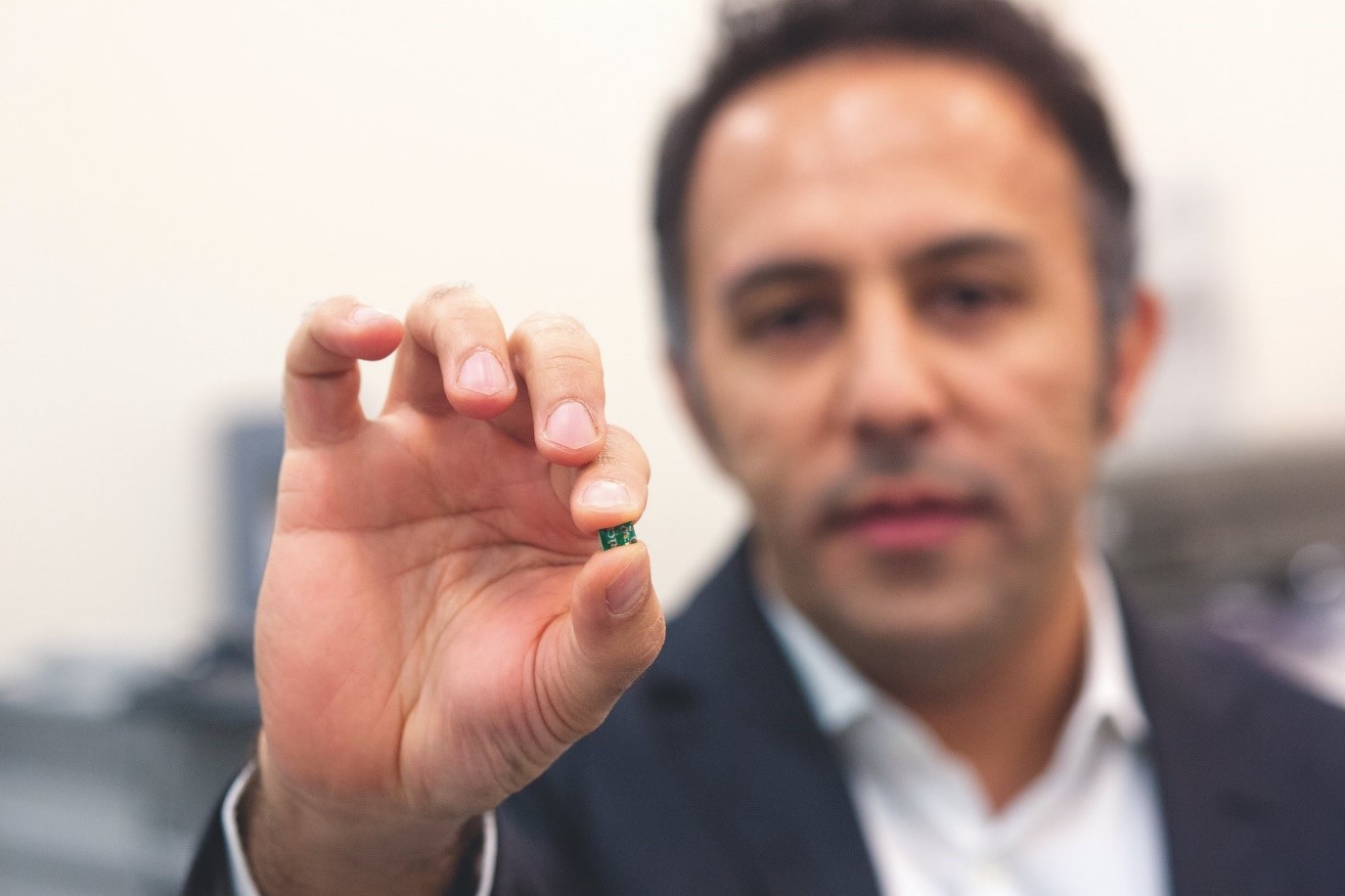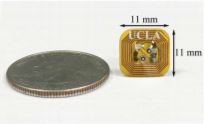December 10th, 2019

Professor Aydin Babakhani is working on developing advanced microchip sensors for a new class of heart pacemakers, supported by $1 million in funding from the National Institutes of Health (NIH). The funding is part of a four-year, $2.4 million grant to a multi-institution research team.
A pacemaker is a device that helps control abnormal heart rhythms, more generally referred to as arrhythmias. One of the biggest issues with conventional pacemakers is their size. They are comprised of a pulse generator and pacing leads. The pulse generator is relatively bulky and requires a significant amount of space. This constraint makes the chest and the abdominal cavity the only viable locations it can be placed in. This pacemaker uses a battery as its power source. Leads are an essential part of the circuitry needed to incorporate the battery. By removing the battery and it’s leads, the risk of infection and the quality of human life can be improved as well.
This is precisely what the Integrated Sensors Lab has been working on. To get rid of the battery would mean to get rid of the power source itself. The lab’s main area of focus is developing techniques to wirelessly transmit power to the pacemaker. Removing the need for a power source on the system also allows the device to scale down in size significantly. This removes the location constraint that was previously imposed on the device and allows for it to be placed in a number of more efficient locations in the body. While such a change is revolutionary in itself, it isn’t the limit to which this device improves its predecessor.

The miniaturized wirelessly powered pacemakers can be directly implanted at the desired sites, thus eliminating the need for intravascular leads. This allows for synchronized and leadless pacing across different chambers of the heart. This multisite model shows significant improvement as compared to the conventional single-site model as it can be placed at very specific points thus allowing for the creation of an optimum network of sensors which do a much better job at correcting conditions like ventricular dyssynchrony.
The lab is currently performing animal trials to ensure that the device is capable of delivering efficient results consistently. Within the next two years, the professor hopes to run human tests as well, before rolling it out for the use of the general public. About 30% of patients suffering from cardiac conditions have ventricular dyssynchrony and seek for cardiac resynchronization therapy. The introduction of such a device will revolutionize the way such problems are dealt with in the future and will improve the quality of life and method of treatment of such patients.
Learn more about the professor, his lab and their work at https://www.seas.ucla.edu/~aydin
